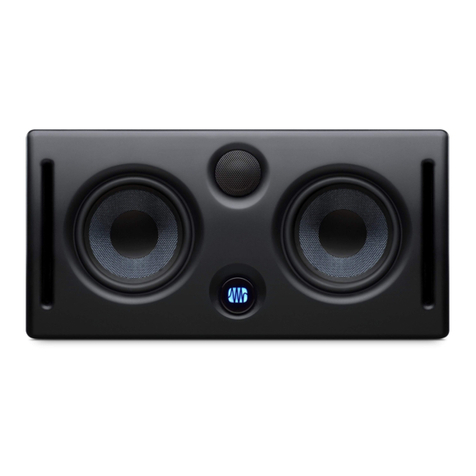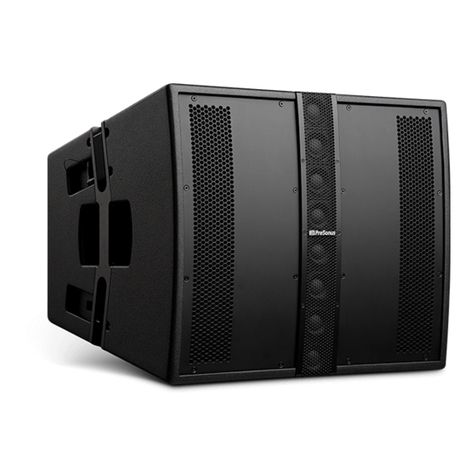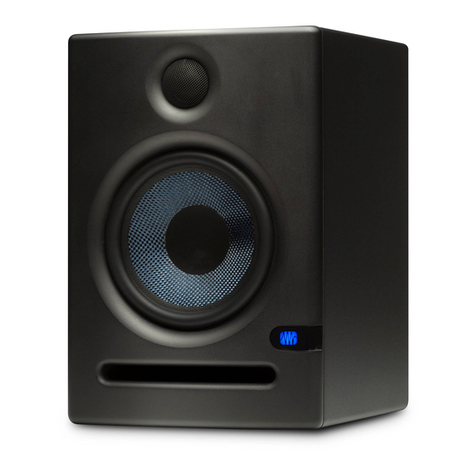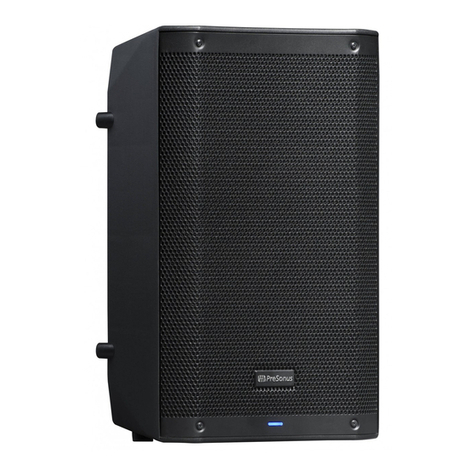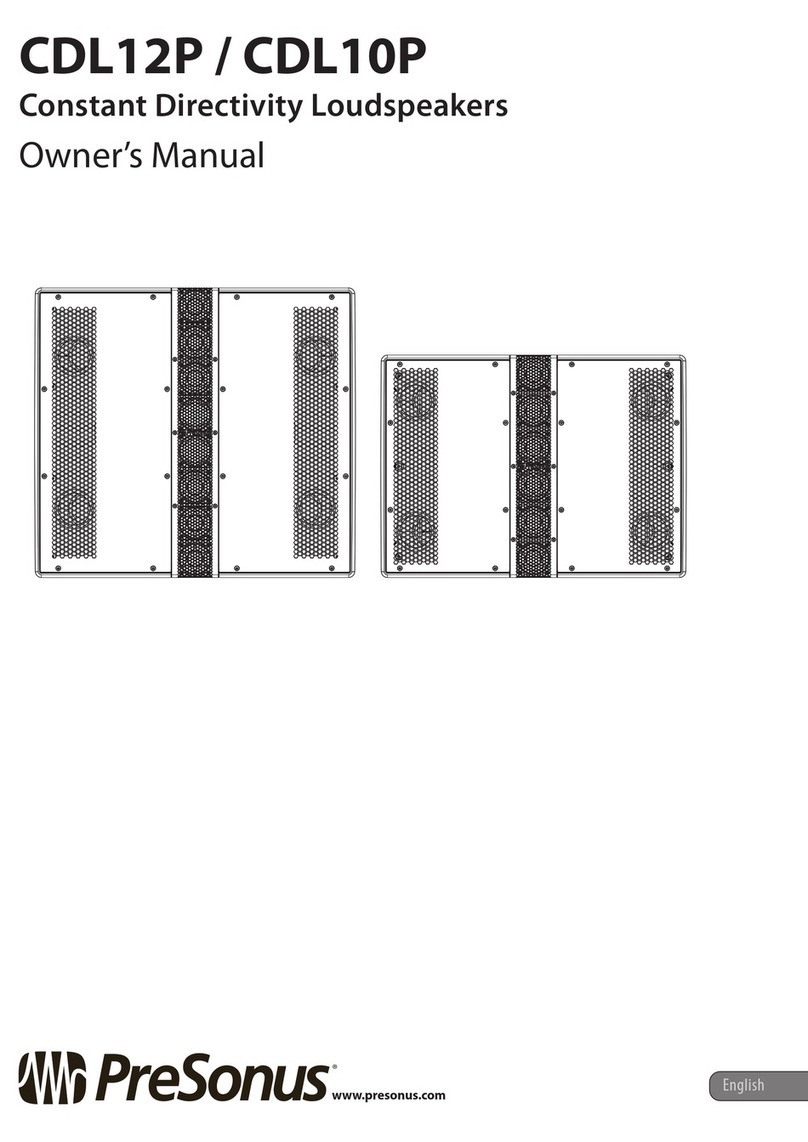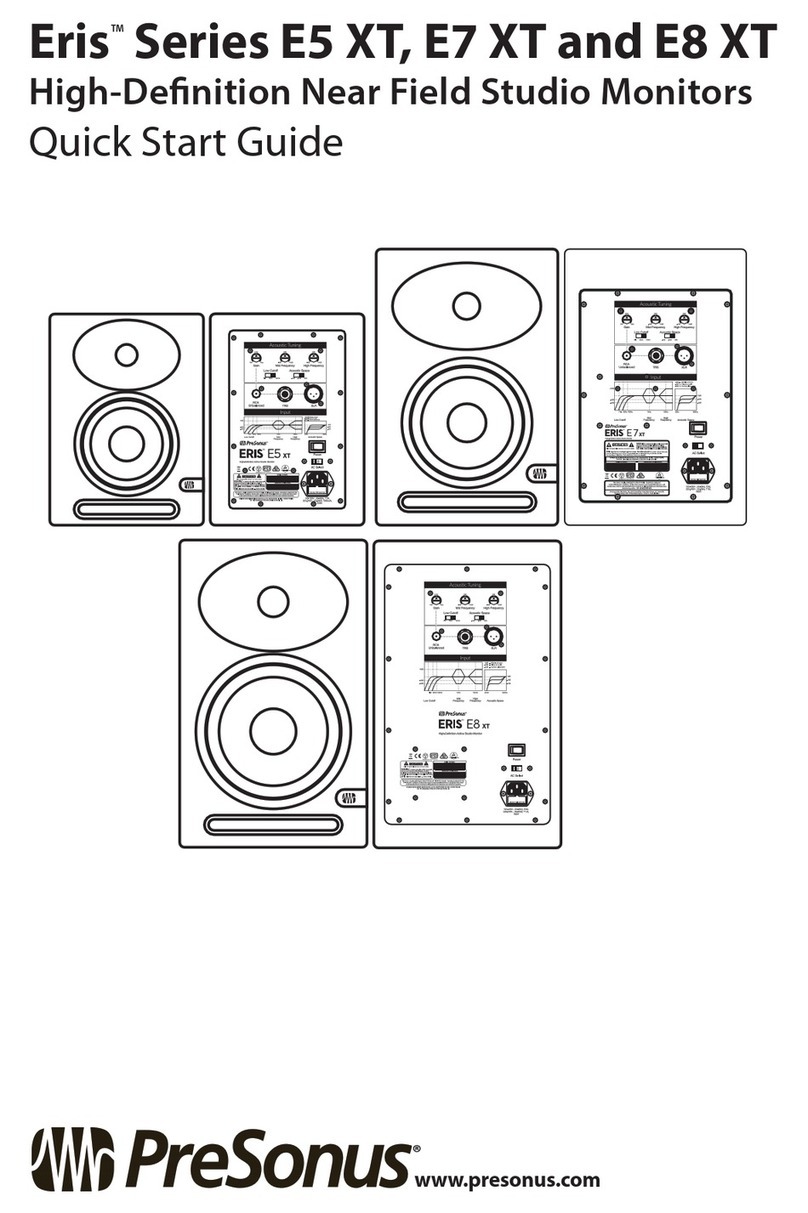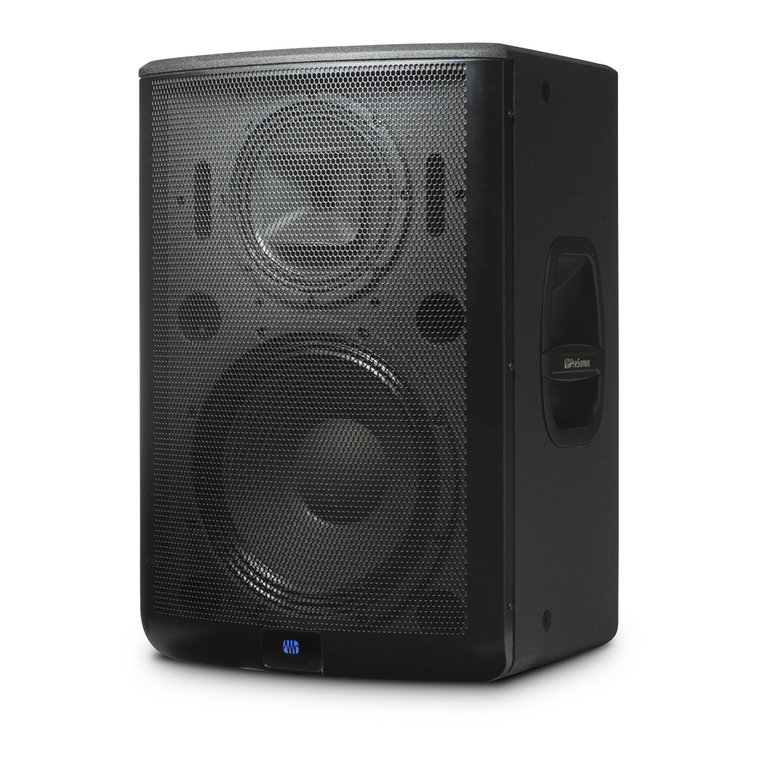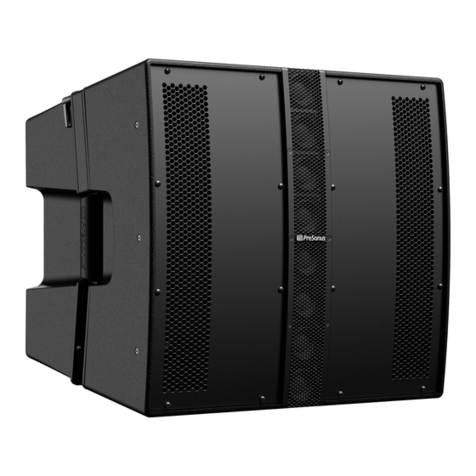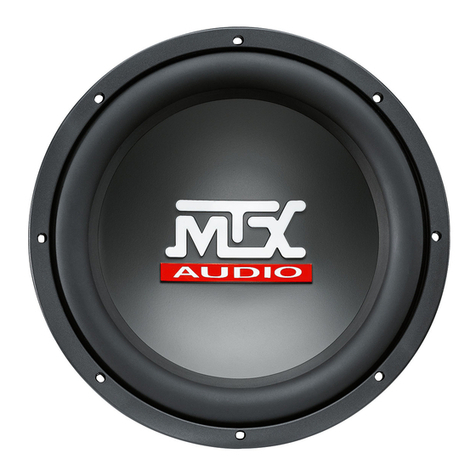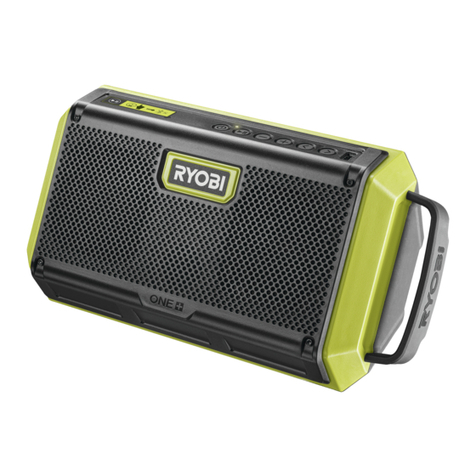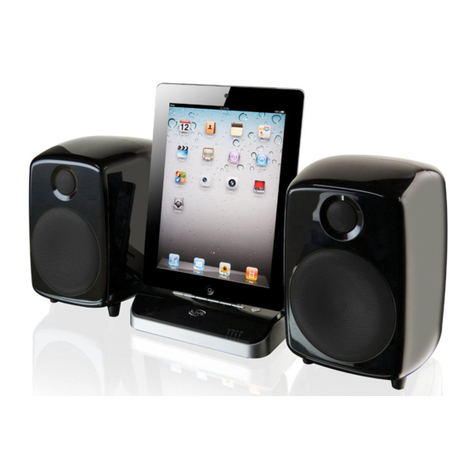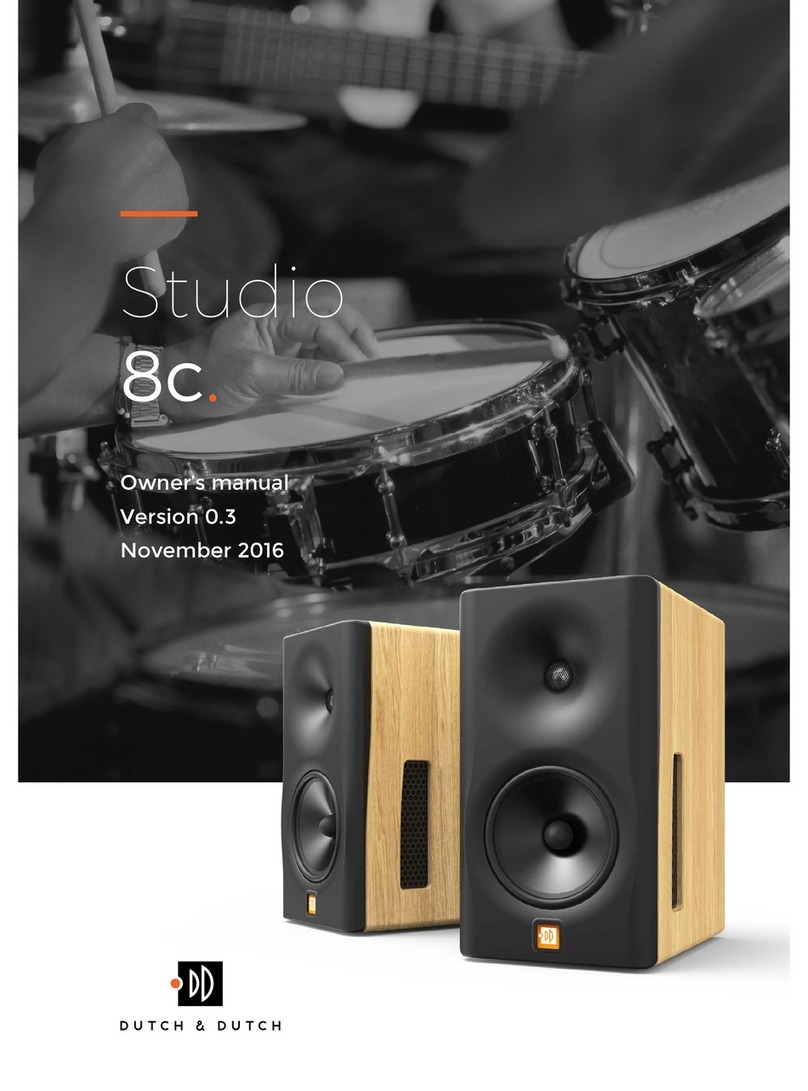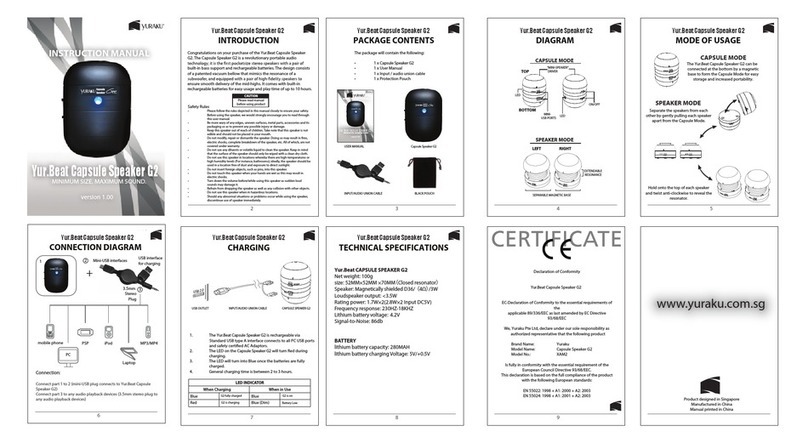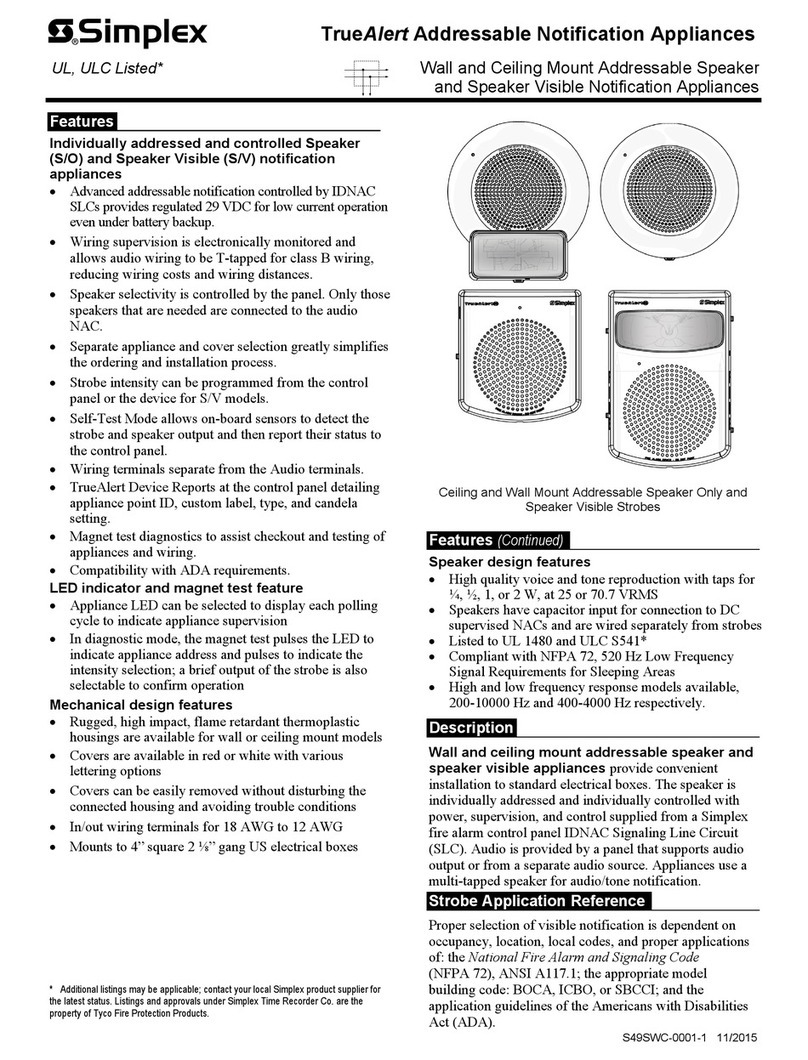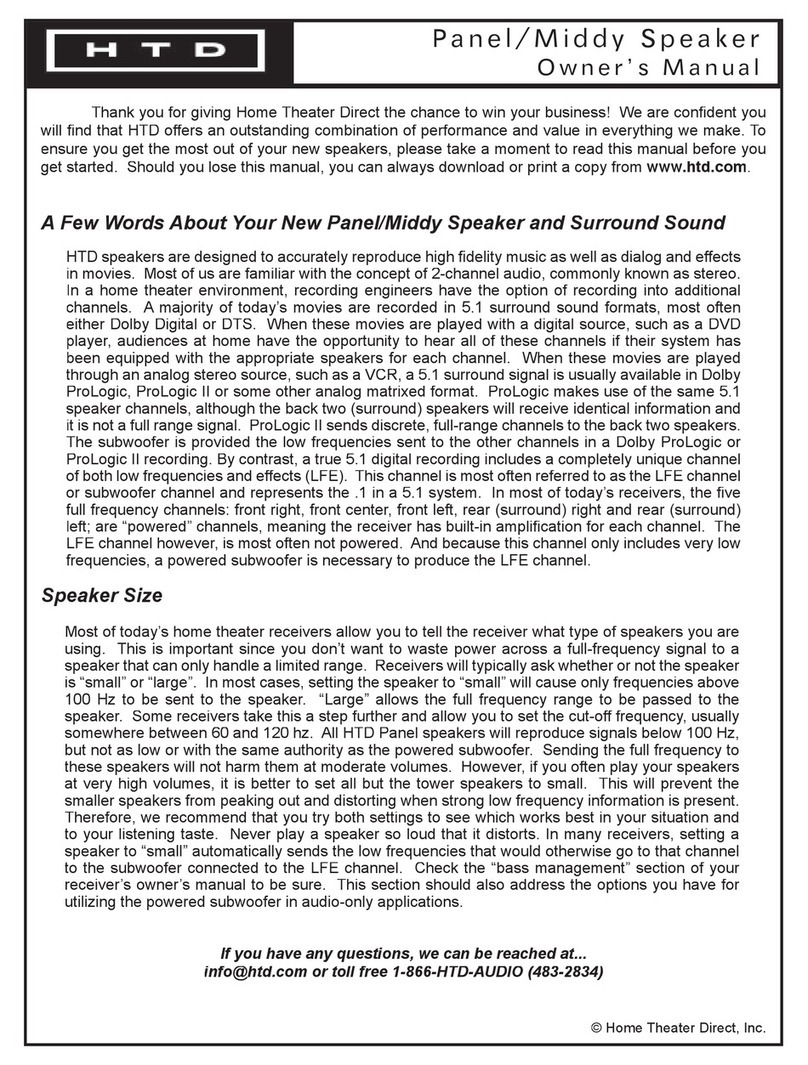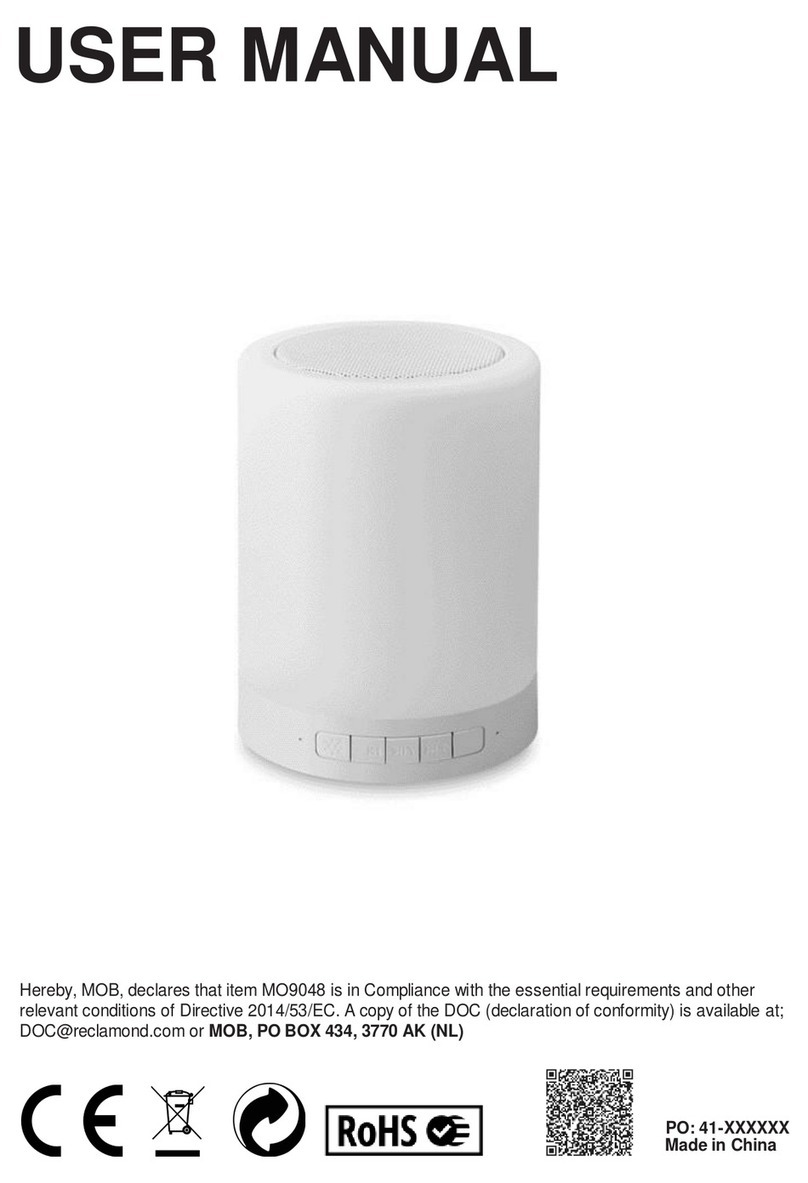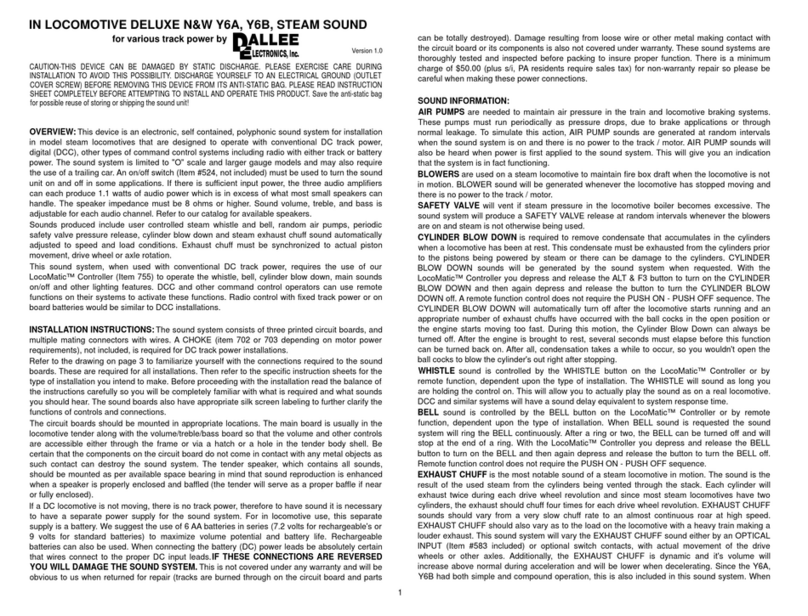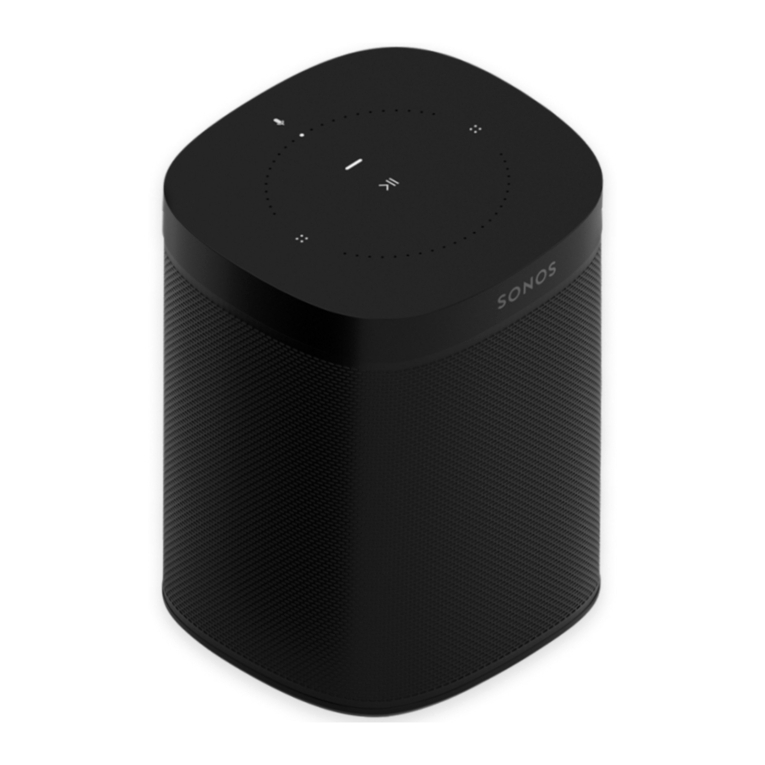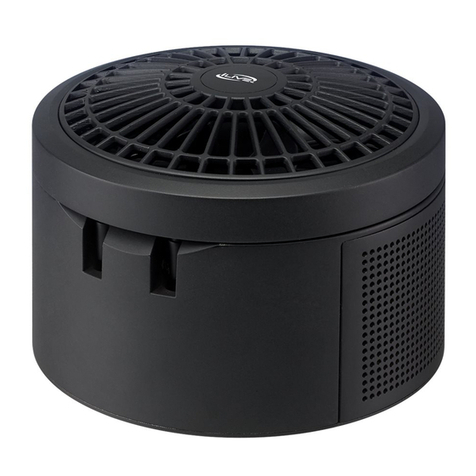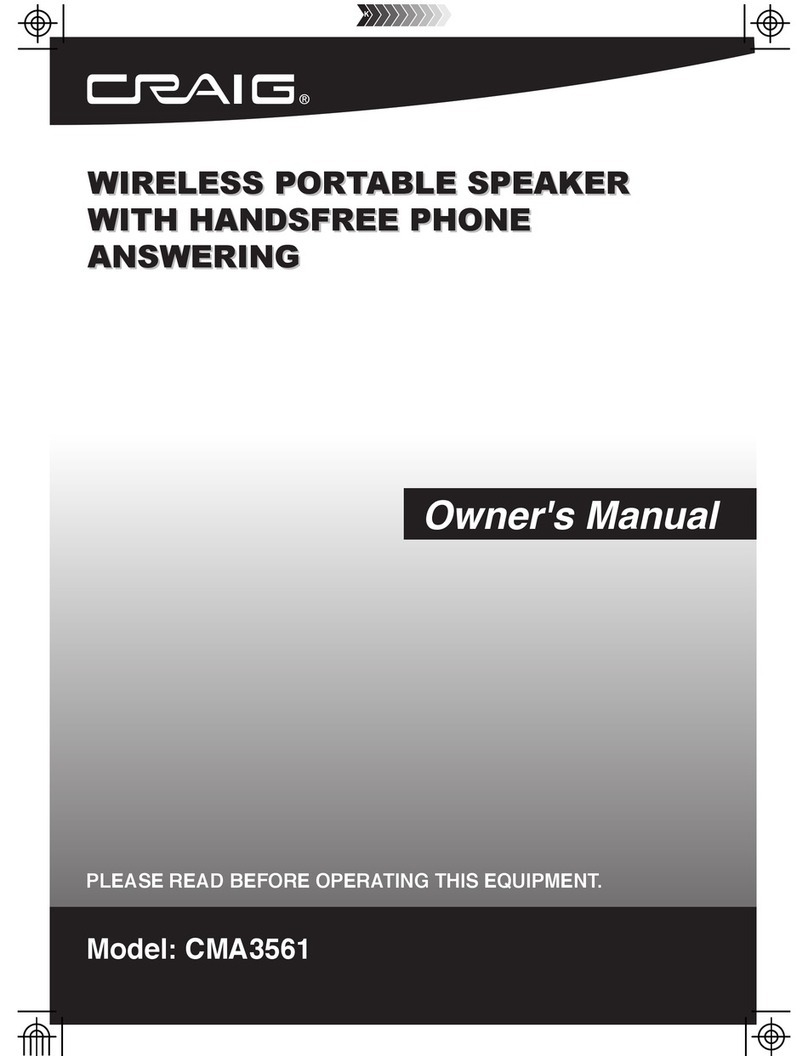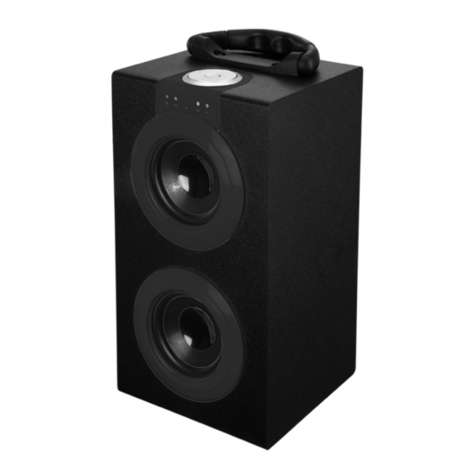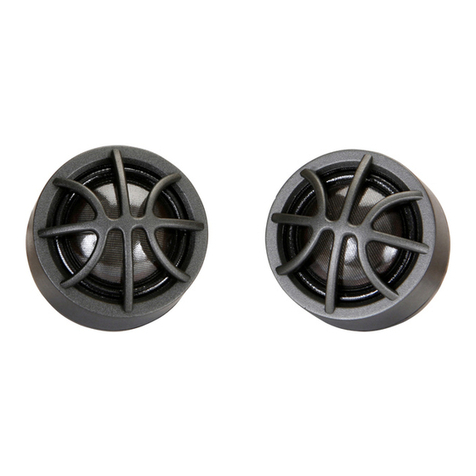speakers or desktop speakers. If you
have a monitor control system just
itching to switch between your “big
speakers” and smaller, real-world
speakers, the E5 could be an excellent
choice. Compared to more expensive
speakers, the main dierence is the
“character” of the highs; Eris doesn’t
have the sort of airiness I associate
with, for example, ribbon tweeters.
But accuracy is paramount in the
studio, because transportability is
crucial—and the E8 scores high in
that regard.
Conclusions Like mic pres, speak-
ers have reached a pretty consistent
level of quality for a given price point.
PreSonus’s “special sauce” is the set
of controls, but listen carefully to the
E8: e sound is even, projects well,
and lets you reference accurate mixes
at a reasonable price. Like I said—a
Volkspeaker. ■
probably double-check other parts of
your listening chain, or the room it-
self, as a very large boost or cut that’s
set within the speakers is applying a
bandage to a much larger problem.
e Acoustic Space switch is a low
shelving control that can either be
set at or to 2 or 4 dB of attenuation
with a corner frequency of 800 Hz.
is switch is specically designed
for situations where you can’t place
the speakers suciently far away
from walls or corners to prevent bass
buildup; ideally the -2 dB setting
would work for speakers near a back
wall, and the -4 dB setting would help
compensate in situations where the
speakers need to be set in the corners
of a room.
e last switch, Low Cuto, allows
you to engage a 12 dB/octave high-
pass lter with a corner frequency
of 80 or 100 Hz. is is specically
intended to allow the Eris speakers
to work with a separate subwoofer,
if you feel your monitoring situation
needs the stronger extended bass
of a sub; our listening sessions were
based entirely on listening to the Eris
speakers by themselves.
Speaking of listening sessions, we
set up the two Eris speakers under
very dierent sets of conditions,
based on their likely areas of use.
e E5 monitors were tested in a
desktop-audio setup with IsoAcous-
tics ISO-L8R155 isolation stands on
conventional shelves, as one might
use when working with a DAW in a
home studio. e E8 speakers were
mounted on speaker stands in the
listening/mix room at Music Maker
Publications, which is treated with
GIK Acoustics paneling to control
reections at the listening position. In
both cases, the speakers were set up
as closely as possible to an equilateral
triangle with the tweeters level with
our ears—4 feet on a side for the E5
monitors and more like 6 feet on a
side for the E8 speakers.
Per PreSonus’s advice, we did not
burn in either set of speakers before
beginning our critical listening; our
rst impressions came (literally)
straight out of the box. As usual, our
listening materials included well-
known and very simply recorded
rock, jazz, acoustic singer/songwriter
pop featuring guitar and piano, and
classical music, with excursions into
world music, electronica of various
sorts, and of course the infamous
mistakes and missteps of albums
we’d recorded in comparatively prim-
itive recording setups in the 1980s
and 1990s.
Listening to the E5
Our rst impression upon ring up
the E5 was, “Whoa, that’s loud!” Our
second impression was, “Whoa, that’s
kinda harsh.” Our third impression
was, “Ah... when in doubt, make sure
you’ve set your input levels properly!”
ese little speakers are very
ecient and get loud pretty quickly,
but they have a convincing way to
keep you listening at safe/sane levels;
while they’re rated to 102 dB peak
SPL at 1 meter, the woofers start to
sound brittle and unpleasant when
you get close to that level. Our ideal
“loud listening” level for the E5 was
a much more
reasonable 85
to 90 dBA SPL
at the listening
position, and
for most styles
of music we got
great results in
the very ear-friendly range of 75 to 80
dBA SPL.
We tweaked the controls around a
bit and determined that the High and
Mid EQ can in fact get really extreme
if overused; we ended up setting
them Flat for the serious listening.
Our listening setup was rather close
to a rear wall, and in our initial listen-
ing we went back and forth between
having the Acoustic Space controls
set to Flat or to -2dB. In the end, we
felt that the bass we were getting
when the Acoustic Space control was
set Flat wasn’t overhyped or thumpy,
so we left the control there. We didn’t
use the Low Cut at all, since our
system doesn’t include or need a sub-
woofer; if you’re keeping score, that
means our reported results were all
from having the adjustment controls
set at (and the Input Gain set to
unity as well).
Starting at the bottom, the one
place where the laws of physics
will get you every time is in a small
woofer’s ability to reproduce bass
accurately; the E5’s low end of 53 Hz
is usable but you’ll have to check your
results on larger speakers before you
consider your mixes “done”. e roll-
o in the bass was polite and smooth,
and there was a lot of thump in kick
drums and solid harmonic structure
in bass guitars and low piano notes,
even if the very lowest fundamentals
couldn’t be heard fully. Mids were
forward and rockin’, with vocals and
guitars prominent and detailed; on
A new name for two impressive
new entries in the active-speaker
market.
By Mike Metlay
PreSonus has gotten into the
speaker game, and its rst models
to market are the Eris Series. Why
“Eris”? No clue. Eris was the Greek
goddess of chaos (she helped start
the Trojan War, but that’s another sto-
ry); her name’s been attached to the
anarchist Erisians from the famous
Illuminatus!
novels, and
to the distant
dwarf planet
Eris that circles our sun every 557
years. But studio monitors?
ere’s nothing particularly chaotic
about the new Eris speakers... in fact,
PreSonus’ rst studio monitors pres-
ent very neat solutions to the prob-
lem of aordable, good-sounding
monitoring for small studios. We got
to work with both new Eris models
for some extended listening sessions,
and here’s what we learned.
RECORDING May 2013
In common and dierent
e two Eris models are the E5
and E8. Both are biamplied 2-way
speakers in front-ported cabinets of
vinyl-laminated MDF, with silk dome
tweeters and long-throw woven Kev-
lar woofers in a nicely curved fascia
with tweeter waveguide.
e E5 has a 1” tweeter and 5.25”
woofer, with a 35W high-frequen-
cy amplier, a 45W low-frequency
amplier, and a 3 kHz crossover
frequency. It claims a frequency
response (no ±dB tolerances given)
of 53 Hz to 22 kHz. e E8 has a 1.25”
tweeter and an 8” woofer with a 65W
high-frequency amp, a 75W low-fre-
quency amp, and a 2.2 kHz cross-
over frequency. Its rated frequency
response is 35 Hz to 22 kHz.
Both oer a variety of audio tweaks
on the rear panel, letting the user cus-
tomize the speakers’ sound for best
results in a variety of placements.
Inputs are on unbalanced RCA,
balanced ¼” TRS, and XLR. ere are
center-detented controls for Input
Gain, High and Mid frequency tun-
ing, and switches for Low Cuto and
Acoustic Space adjustment. Power
is via standard IEC cable, and the
rear-panel power switch is comple-
mented by a bright blue front-fascia
LED sporting the PreSonus logo.
Tuning for the space
e E5 is small enough to be used
on a computer desktop, while the E8
is better suited to mounting on stands,
and both oer useful tweaks to better
match the speakers to your room. With
the exception of the Low Cuto, all
the provided controls are intended to
help you correct for specic, common
problems with room acoustics.
e High EQ is a shelving band
with ±6 dB of boost/cut and a corner
frequency at 4.5 kHz, and the Mid EQ
is a broad (roughly two octaves, ac-
cording the manual) peaking EQ with
a center frequency of 1 kHz and ±6
dB of boost/cut. I recommend using
these EQ controls with great cau-
tion; they oer a wide range of tonal
tweaks that are very musical to the
ears—that makes them tempting to
play with in order to get your speak-
ers to sound “good”, when what you
actually want
is accuracy.
e High
shelf acts as
a “tilt” control to mellow or sharpen
the high end of what you’re hearing;
it’s best used very subtly in situations
where a room has partial acoustic
treatment like foam panels, which
tend to preferentially damp the high
end. e Mid EQ lets you compensate
for oddnesses that happen in the low
mids, most commonly the reinforce-
ment you get from audio bouncing
up to your ears from your mixing
desk. If you feel you need more than
a dB or two of correction, you should
Placeholder for cover
of magazine if print
or screenshot of web
page
“The E5 costs a bit more per
pair than a set of cheap-ass
desktop computer speakers
and a thumpy little one-note
sub, but for your money you
get monitors you can actually
use for real engineering.”
“Highs were extended and smooth.”
©2013 PreSonus Audio Electronics, Inc. Eris, Sceptre, CoActual and StudioLive are trademarks of PreSonus.








